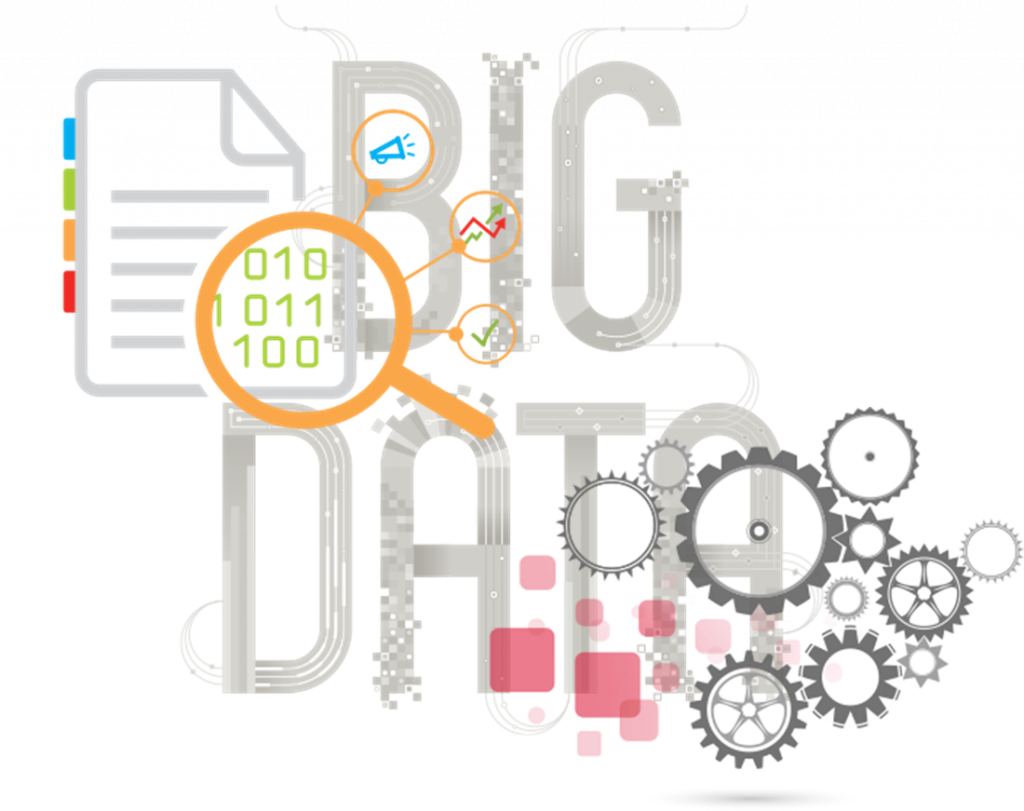Every business leader knows how much the pandemic affected — and continues to affect — the business landscape. Many executives are finding the only way to keep up with these dramatic changes is by gathering and analyzing big data. Eva Murray (@TriMyData), a Technology Evangelist for Exasol, asserts the pandemic has compelled many companies to accelerate their digital transformation plans. She explains, “The push for digital transformation is nothing new. Yet the accelerated adoption of digital transformation inspired by the coronavirus pandemic is unlike anything we have ever seen before. Companies have been forced to quickly ramp up their digital strategies in order to survive in our new world of virtual business. … Companies that can evolve and retune their business strategy endure. This has never been more evident than in today’s rapidly changing business landscape and uncertain economy.”[1] Devansh Sharma, Global Head of Products Strategy for Skoruz Technologies, agrees that big data analytics will become even more important in the post-pandemic world. He writes, “We have seen the entire world shift from process-driven to data-driven decision-making. And now that we are standing at the brink of a new normal amidst these unprecedented times, the usage of data and analytics should act as our guide to the post-COVID-19 era.”[2]
What does it mean to be data-driven?
Doug Laney (@Doug_Laney), an Innovation Fellow in Data & Analytics Strategy at West Monroe, asserts, “Today, data and analytics go together hand-in-glove.”[3] He believes companies can judge their progress towards becoming data-driven using a good maturity model. He notes, “A good maturity model should include ways of assessing those activities, capabilities, behaviors, or other indicators that typically beget successful projects, not necessarily indicators of current or past success. I have come to believe that all indicators should be positive behaviors or observations, not negative ones. In this way, the model can be used prescriptively and will help prevent finger-pointing.” He goes on to note that there are many vendors and consultancies offering maturity models. He cautions, however, “Maturity models, particularly those from data and analytics technology vendors, can be heavily biased toward their solutions. Or worse, they can be not much more than clickbait for capturing contact and other data about your organization. Even maturity models from consultancies can slant toward their own key capabilities. Ensure the model you use is balanced and even includes maturity indicators that don’t necessarily align with the vendor’s messaging.”
What does a maturity model look like? IDC offers a typical framework for a digital transformation (DX) maturity model.[4] IDC’s model has five stages of maturity. They are:
Stage 1. Ad Hoc. “Management goals for DX are poorly defined and occasionally chaotic. Success often depends on individual effort, and benefits are not widely shared within the business. Business and IT digital initiatives are disconnected and poorly aligned with enterprise strategy and not focused on customer experiences.”
Stage 2. Opportunistic. “Basic capabilities are established. The necessary disciplines for DX are in place to repeat previous successes on similar initiatives. The business lags behind its best performing peers. Business has identified a need to digitally enhance customer business strategies, but execution is on an isolated project basis, and progress is neither predictable nor repeatable.”
Stage 3. Repeatable. “Business-IT goals are aligned at the enterprise level to near-term strategy and include digital customer product and experience initiatives but not yet focused on the disruptive potential of digital initiatives. Capabilities are documented, standardized, and integrated at enterprise level. DX is a strategic business goal. The business is on par with competitors & peers.”
Stage 4. Managed. “Capabilities for DX are embedded in the enterprise and tightly linked to an agile management vision. The business leads its peers and competitors. Integrated, synergistic business-IT management disciplines deliver digitally enabled product/service experiences on a continuous basis.”
Stage 5. Optimized. “Enterprise is aggressively disruptive in the use of new digital technologies and business models to affect markets. Business innovation driven by constant input from ecosystem and feedback. Continuous improvement is a core management philosophy. Leadership embraces risk-taking and experimentation to develop innovative, groundbreaking capabilities.”
According to Murray, companies need to achieve the highest level of maturity in order to compete successfully in the changing business landscape. “Companies have to be data-driven just to compete in the chaotic post-COVID-19 world,” she writes. “The ability to pivot and quickly change your business strategy as it relates to people, products, and/or processes based on current events — whether they are happening in the world market or internally — has never been more apparent than it is today.”
Becoming more data-driven
Errin O’Connor (@errinoconnor), founder, CEO, and Chief Architect at EPC Group, insists, “The growth of data-driven large corporations using business intelligence and wide-scale adoption of big data across industries is the future of business.”[5] The staff at FinancesOnline agrees with that assessment. They note, “Advances in data analytics are changing the way business is done. Analytics trends suggest that our reliance on these technologies — including the best data analytics software — will only grow in the coming years.”[6] They go on to note, “Data has finally taken center stage in this digital economy. It’s now clear how data and analytics continue to transform the business world. In a study, almost half of businesses agree that big data and analytics had altered how things are done in marketing, sales, and other activities. To survive in today’s highly competitive market, businesses must have three integrated elements. They need disruptive business models, agile product innovation, and actionable customer insights.”
The staff cites a 2018 Harvard Business Review Analytic Services Survey that found a significant majority of survey participants agreed on what constitutes the most important capabilities of a data-driven enterprise. A data-driven enterprise can:
- Extract new value and insights from existing data/analytics applications (86%)
- Provide enhanced security and access controls for enterprise systems (81%)
- Deploy analytics with high performance and scalability (79%)
- Easily access and combine data from various external data sources (78%)
- Certify data and create and enforce a single version of the truth (77%)
- Deliver actionable, customized intelligence to staff across the enterprise (75%)
Cognitive computing solutions, like the Enterra System of Insight and Actions®, can integrate and analyze all types of data to provide decision-makers with a single source of truth and the kind of actionable insights they require to make better decisions. Bain analysts, Michael C. Mankins and Lori Sherer (@lorisherer), assert if you can improve a company’s decision making you can dramatically improve its bottom line. They explain, “We know from extensive research that decisions matter — a lot. Companies that make better decisions, make them faster and execute them more effectively than rivals nearly always turn in better financial performance. Not surprisingly, companies that employ advanced analytics to improve decision making and execution have the results to show for it.”[7]
Concluding thoughts
President Woodrow Wilson once said, “I not only use all the brains that I have but all that I can borrow.” Advanced analytics solutions can provide the “borrowed brains” decision-makers require to thrive in today’s changing business landscape. O’Connor concludes, “The world of data analysis is evolving, and we will see business disruptions in almost every sector powered with data.” Murray adds, “While I cannot predict what will happen next in these unprecedented and wildly unpredictable times, strengthening the pillars of your data analytics strategy is one of the most effective ways to navigate an uncertain environment.”
Footnotes
[1] Eva Murray, “Going Beyond Data-Driven: The Three Pillars of Data Analytics,” Dataversity, 4 September 2020.
[2] Devansh Sharma, “Demystifying the New Normal with Data and Analytics,” Dataversity, 7 September 2020.
[3] Doug Laney, “12 characteristics of a great data and analytics maturity model,” Information Management, 2 December 2019 (out of print).
[4] Staff, “IDC Future Enterprise Maturity Assessment, IDC.
[5] Errin O’Connor, “How to Leverage Big Data for Business Intelligence,” Dataversity, 3 September 2020.
[6] Staff, “10 Top Analytics Trends & Forecasts for 2020 You Should Be Thinking About,” FinancesOnline, 1 April 2020. (email Erwin Jankowski)
[7] Michael C. Mankins and Lori Sherer, “Creating value through advanced analytics,” Bain Brief, 11 February 2015.





